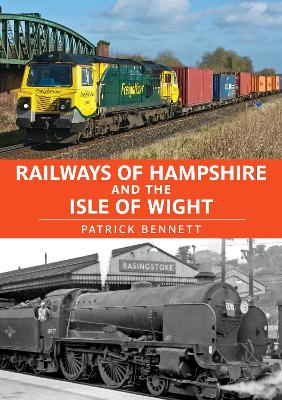First on the scene was the London & Southampton, soon to change its name to the London & South Western. The branch on to Salisbury was the start of the LSW’s drive to reach Exeter. Other routes followed including the Portsmouth Direct, intended to outdo the London & Brighton’s attempt to capture the Portsmouth traffic. The need to reach Bournemouth resulted in two separate lines built by the LSW. Gradually the LSW developed its network; some routes such as the Meon Valley or the Sprat & Winkle were never very profitable and succumbed to early closure. The LSW did not have it all its own way in the county and no fewer than four different companies penetrated from the north. These were the Midland & South Western Junction; the Didcot, Newbury & Southampton; the GWR from Reading to Basingstoke; and in the far north-eastern corner the South Eastern Railway. In the south-eastern corner, the LBSCR penetrated as far as Portsmouth and Hayling Island. The Isle of Wight had three different railway companies controlling lines that totalled fewer than 50 miles. Always something of a curiosity, the remaining line from Ryde to Shanklin has been operated for more than fifty years by redundant London Underground trains.
Patrick Bennett uses previously unpublished photographs to tell the story of the area’s railways.
- ISBN10 1398110256
- ISBN13 9781398110250
- Publish Date 15 July 2023
- Publish Status Active
- Publish Country GB
- Imprint Amberley Publishing
- Format Paperback
- Pages 96
- Language English
